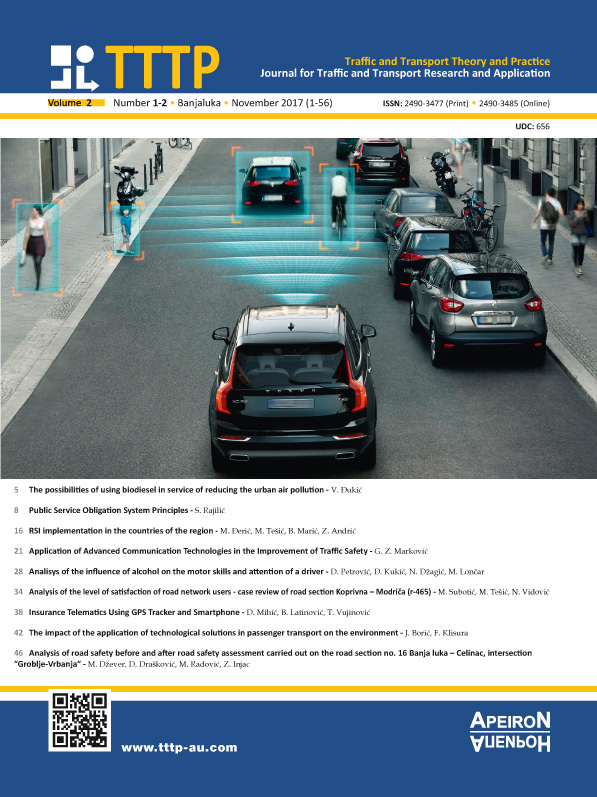RSI implementation in the countries of the region
DOI:
https://doi.org/10.7251/JTTTP1701016DJAbstract
As early as 2001, the Europeen Commision expressedin its White Book the need for assessing the impacts on road safety and conducting road traffic safety inspections with the aim of reducing the number of fatalities in car crashes from 2001 to 2010. In this context, the Directive 2008/96/EC on road infrastructure safety was issued. The purpose of this Directive was to ensure higher level of traffic safety during all phases of the road life cycle, from its planning, designing, constructing to the maintanance of the road already in operation.
The said Directive requires for procedures relating to the Road Safety Impact Assessment (RSIA), Road Safety Audit, Network Safety Management (NSM) and ranking of high accident concentration sections (Black Spot Management) and Road Safety Inspection (RSI) to be established and implemented.
This paper aims at showing the current state of affairs in countries of the region with regard to the implementation of the road safety inspections.
The results of this paper will provide the scientific and expert public with insights into the state of trafic safety of the region’s countries with regard to Road Safety Inspection.
